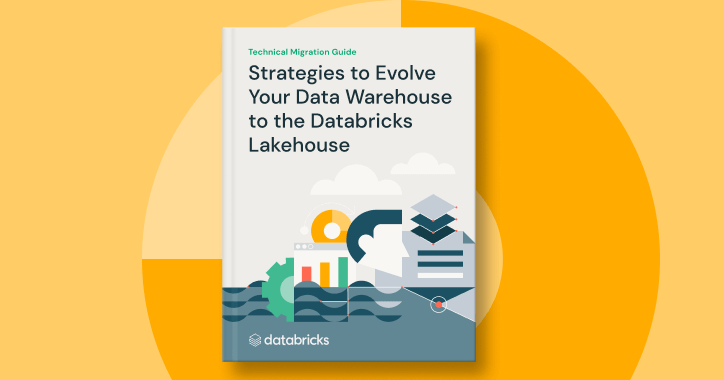As the landscape of data management continues to evolve, enterprises are increasingly shifting to modern platforms like Databricks to take advantage of big data analytics. This shift is driven by the need for greater efficiency, flexibility, cost savings, and data-driven growth. However, migrating data warehouse workloads to Databricks can be a complex and daunting task. Drawing on years of cloud migration experience, we’ve identified key mistakes enterprises commonly make—and how to avoid them. Here are five common pitfalls during legacy data warehouse migration to Databricks and strategies to ensure a smooth transition.
Mistake 1: Overlooking Data Transformation Complexities
Embarking on a data migration without a full grasp of the complexities involved is like setting sail without a compass. Enterprises often underestimate the challenges of data transformation, leading to inconsistencies, extended downtime, and performance issues in the new environment.
Solution: Start with a thorough assessment of your data warehouse workloads, including the type, source, and volume of data. Understanding the intricacies of your data is crucial for a successful migration. Identify potential challenges early to avoid disruptions and ensure your data transformation process is seamless and accurate.
Mistake 2: Ignoring Security Best Practices
Security is a critical aspect of data management, yet it’s often neglected during the migration process. This oversight can result in data breaches, compliance failures, and compromised business integrity.
Solution: Prioritize security throughout the migration. Develop a comprehensive security strategy that includes permission-based access controls, encryption of data both at rest and in transit, and robust data governance policies. Familiarize yourself with the shared responsibility model of cloud providers, and ensure all regulatory requirements are met to protect sensitive data during and after migration.
Mistake 3: Attempting a ‘Big Bang’ Migration
A hasty, all-at-once migration can cause significant disruptions, leading to data inconsistencies, downtime, and potentially halting operations altogether.
Solution: Adopt a phased migration approach. This strategy allows for a gradual, controlled transition, reducing disruptions to business operations. Phased migration also facilitates quicker identification and resolution of issues, providing a smoother path to fully operational workloads in the Databricks environment.
Mistake 4: Failing to Define and Prepare Source Data
Poorly defined and unprepared data can complicate the migration process, leading to quality issues that undermine the success of the migration.
Solution: Conduct a comprehensive analysis of the source data before migration. Clearly define the data intended for migration and evaluate your current environment to identify gaps, errors, and duplicates. This preparatory step ensures the data aligns with new parameters in Databricks, paving the way for a successful migration.
Mistake 5: Skipping Data Testing and Validation
Migration doesn’t end when the data is moved to the new environment. Skipping thorough testing and validation can leave errors undetected, impacting analytics and decision-making processes.
Solution: Implement extensive testing and validation procedures post-migration. Compare the performance of queries and operations between the old and new environments to ensure data accuracy, performance optimization, and overall system reliability in Databricks. This step is critical for confirming that the migration has been executed correctly and that the new system functions as intended.
How LeapLogic Can Simplify Your Databricks Migration
Traditional data warehouse migration approaches are often slow, error-prone, and fraught with challenges. LeapLogic, a Databricks Migration Partner of the Year, offers an automated, streamlined solution that simplifies and de-risks the migration process. Here’s how LeapLogic addresses key considerations for modernizing legacy enterprise data warehouses:
Phased Migration: LeapLogic supports phased migrations, ensuring a smooth transition with minimal business disruption.
Proprietary Element Handling: It efficiently maps proprietary elements, such as BTEQs, optimizing them for the Databricks environment.
Risk Mitigation: LeapLogic incorporates a robust risk mitigation strategy, accounting for potential downtime and ensuring a secure, reliable migration process.
Comprehensive Workload Coverage: LeapLogic covers all data warehouse workloads, including DML scripts, orchestrator scripts, analytics scripts, and reporting queries.
Conclusion
Migrating your data warehouse to Databricks is a transformative journey that can unlock powerful new possibilities for your enterprise. By understanding and avoiding these common mistakes, you can navigate the complexities of migration with confidence. With LeapLogic’s automated approach, you can modernize your legacy data warehouse to Databricks at a lower cost and with reduced risks. Legacy workload modernization doesn’t have to be challenging—discover how leading Fortune 500 companies have successfully leveraged LeapLogic to automate the migration of data warehouse, ETL, Hadoop, analytics, and reporting workloads to cloud-native platforms.
Avoiding Common Pitfalls: A Guide to Migrating Your Legacy Data Warehouse to Databricks


